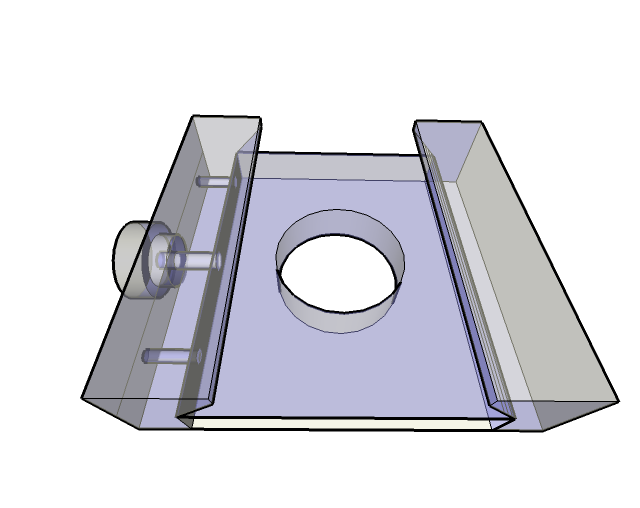 Rupert's Telescope Page
Rupert's Telescope Page
The Ramblings of an Amateur Telescope Maker
ALT-AZ Mount from an adapted tripod
By Rupert Powell
Friday, November 12, 2004
Updated Monday, November 22, 2004
Turning an old Sony tripod into a silky smooth Alt-Az mount for my newly completed 80mm F5
The tripod can be seen in its standard state in the Bofs article.
BOFS has turned out to be a great success and has provided me with many great views of the night sky. Also, because it is so portable I can set it up in less than 5 minutes which means I can take advantage of any small gap in the clouds, which recently is the only astronomy I have been able to achieve!
Until recently I have been using BOFS mounted on an old Sony camera tripod which came with a Sony 3/4" video camera/portapack circa 1978! Not a bad tripod, all aluminium with a pretty smooth head. The main drawback with this head is due to its more traditional camera tripod head approach where the scope sits atop of the TILT section (to use the camera parlance!). This puts the scope's CofG miles from the pivot point of the TILT section (roughly 10cm). What this means is that in order to prevent the scope from sagging it is necessary to adjust very carefully the ALT (TILT) friction so that the scope will stay put when released. Unfortunately the scope always sags slightly when released, even when the ALT movement is locked. It only sags a tiny amount but this is enough to be annoying!
The answer to this problem is to move the scope's CofG inline with the ALT pivot point.
A quick review of the Sony camera head revealed that a quick redesign of the ALT arrangement would allow for the CofG to be lowered as required. Having looked around at as many other ALT-AZ designs I could lay my eyes on I decided on a solution similar to that found on the Universal Astronomics designs http://www.universalastronomics.com/ as opposed to the common TeleVue design, which looks heavier and slower to set up. All that was needed for the redesigned head was a large aluminium disk turned and bored to fit the existing ALT bearing.
PICTURE to Come
This ali disk was held onto the original bearing casting by the origional brass washer and steel screw, with the addition of a PTFE washer turned from a block of PTFE picked up from my local autojumble.
Mounted to the disk is a dovetail plate arrangement favored by most refractor designs.
I spent some time examining all the different dovetail designs (of which there are many!) all of which have slightly differing ways to lock the dovetail plate in place. I was inspired by the designs of the Astro Physics (everything they do looks very well thought through) and an ATM site http://www4.tpgi.com.au/users/daveg/Axes.html Of course my prerogative as an ATM'er is to throw together different design ideas into my own design, which I did. This is based on the 'I know best' principle, however it doesn't always work out. The subtlety of some designs is not appreciated until AFTER you have constructed something, usually by which time it is too late.

To see a 3D rotation click here dovetail.avi (800Kb)
I opted for a design where one side of the dovetail clamp was fixed and the other was free to move on two smooth shafts, tightened against the dovetail plate with a large knob screwed into the base-plate. What I liked about this design is that it exerts an even pressure along the whole side of the dovetail plate, rather than the simpler arrangement used on cheaper scopes where the screw goes right onto the face of the dovetail. This would require more force and would also badly mark the plate. I also opted for a safety screw mounted at the front end of the dovetail plate which should prevent the scope from sliding out of the mount if it hasn't been tightened down sufficiently (with obvious disastrous results!)
The resulting mount is a pleasure to use and the scope slides smoothly in the dovetails and can be locked in place without lots of force on the clamping knob. The amount of movement on the plate from front to back allows the scope to be precisely balanced, regardless of eyepiece choice. This really helps the smoothness of the ALT movement and prevents any sagging effects when releasing pressure from the scope.
BOFS (The 80mmF5 scope) is now even easier to set up & tear down than before and, with its super-smooth ALT-AZ movement, does just what it is told!
The next phase of my BOFS project is the addition of some Digital Setting Circles of the Dave Ek PIC based design - blended with a disused Palm organiser.....
......watch this space!